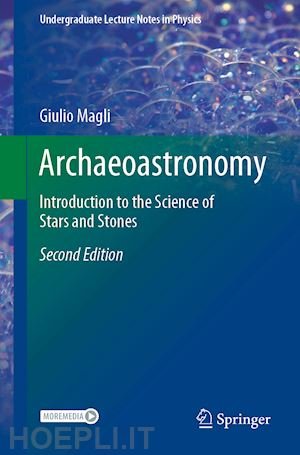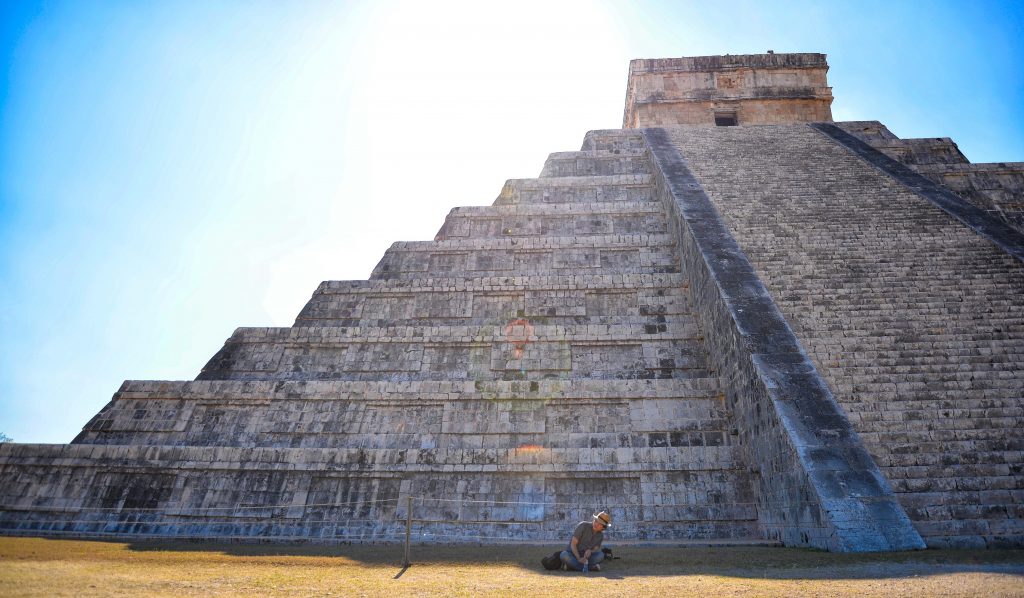An interview with Professor Giulio Magli

If you have ever visited the Maya site of Chichén Itzá at the time of the spring or autumn solar equinox, you will have witnessed a snake-like apparition that makes its way down the steps of the pyramid dedicated to Kukulkán, the Mesoamerican serpent god. The structure, which is also known as El Castillo consists of a 24-metre-high stone pyramid crowned by a 6-metre-high stone temple. El Caracol, the building that is often referred to as “The Observatory” is another example of the Maya people’s interest in astronomy, as there is evidence that the site was used as a place to watch the heavens from an unobstructed, raised platform.
As Chichén Itzá, one of the New 7 Wonders of the World, is renowned for its significance in the world of archaeoastronomy, our correspondent Melita Cameron-Wood spoke to Italian astrophysicist and renowned archaeoastronomy expert Professor Giulio Magli to find out more about this special location. Archaeoastronomy is a field of study that focuses on the astronomical knowledge of prehistoric cultures and the relationship between their buildings, the sky and its celestial bodies. Magli, a senior-level professor in Mathematical Physics, has been teaching a course on archaeoastronomy at the Polytechnic University of Milan since 2009. He has also written a book on the subject entitled Archaeoastronomy: Introduction to the Science of Stars and Stones.

How did you first become interested in archaeoastronomy?
Magli: I first became interested in archaeoastronomy when Rudolf Gantenbrink, a German engineer and explorer, researched the shaft of the Khufu Pyramid in Egypt. It was very clear that it was astronomically oriented. The community of Egyptology was unable to accept it. That was when I first started working in the field of archaeoastronomy. I worked for 10 years in Egypt, and then I worked in Asia. Now I am based in Milan, as I haven’t been able to move for projects because of the pandemic. But I have been working on a project about the astronomical orientation of the Kofun Tombs in Japan using satellite imagery.
Can you tell me more about the key astronomical events that can be observed at Chichén Itzá?
Magli: The key astronomical event at Chichén Itzá is the spring equinox. Of course, when you have an event that occurs at one equinox, it will occur at the other equinox because the astronomical alignment will be the same. But in September, it usually rains, so we can safely say that Chichén Itzá was meant for the spring equinox, which in a way is a harbinger of the rainy season, which comes a month or so afterwards. For the Maya people, the rain was a fundamental part of life. The rainy season was associated with the God that we call the plumed serpent. I’ve been to the Yucatan and to some other less touristy areas nearby, and you can still see the way the land was divided up with small walls that were constructed by the Maya in the jungle. They did this for cultivation purposes. As for the purpose of Chichén Itzá, the Maya people were either interested in the equinox itself, or the so-called quarter days.*
*Quarter days happen two days before and after the spring and autumn equinoxes. They mark the midway point between the solstices.
Chichén Itzá is known for the descent of the serpent. How do you think this seemingly magically moving shadow spectacle was achieved by the Maya astronomers?
Magli: The serpent is a two-dimensional object because it is the shadow of the corner of the pyramid on the walled staircase, so you need a model to construct it. I strongly believe that they made a three-dimensional model of the pyramid before building it, and then moved the model in such a way so as to check that the event was occurring not only around the base of the pyramid, but also around the walled corner of the pyramid. They didn’t have modern torches, so they must have used the light of the Sun to conduct this experiment before building commenced. It is so spectacular to witness the serpent equinox. If you just see a picture, you see a stable image of the serpent, but when you are there, the Sun is actually moving. The Sun is always moving, very slowly for us, but it moves, so the serpent moves, too.
How important was Venus to the Maya people?
Magli: The importance of Venus for the Maya people is beyond any doubt, but we do not have clear evidence of the astronomical alignment between Venus and Chichén Itzá. There might be some alignment, for instance, in El Caracol, but the most clear evidence of an alignment with Venus is in Uxmal, which is also in the Yucutan, not so far from Chichén Itzá. What we do know is that the Maya people used to observe Venus in Chichén Itzá. There are many people, including myself, who think that the most famous astronomical Maya document, the so-called Dresden Codex, which contains the cycles of Venus, was written in Chichén Itzá. We don’t have proof of this, but there is some suggestion that it was written there.
Why do you think the Maya people were so interested in astronomy?
Magli: The key to archaeoastronomy is usually very simple. It is about power. Astronomical cycles mean regularity. And regularity means predictability. This means that when you control the cycles, the calendar of the returning stars and the returning of Venus, you acquire power. So the mechanism which connects power with astronomy generates architecture because the Maya people wanted to show their power in their architecture, their tools and their temples. Different cultures interacted with astronomy in different ways. In Egypt, for example, the pharaoh was the keeper of the cosmic order and the calendar. In China, it was the Chinese emperor. In the Maya culture, the acquirement and maintenance of power was more difficult. They had a cast of priest-astronomers who were in charge of the power in each city. The religion was very obsessive. The gods had to be fed human hearts. They used to sacrifice people because the gods needed to be fed with human blood. The priest-astronomers were the ones who guaranteed the regularity of the cycles. One of these cycles was war. They did not go to war on random days, simply by chance. They went to war on the days which had been established by the priest-astronomers. We are sure of that. For instance, the lunar eclipses, in which you see the moon going blood-red, were an important harbinger of war. That’s why they were so interested in the motion of the Moon and trying to predict the lunar eclipse. There was this strong connection between power, astronomy and religion in their culture.
If you would like to find out more about the field of archaeoastronomy, then check out Magli’s course on the subject on Coursera.
Picture credits:
Featured image: iorni/unsplash.com
Portrait: private
Book cover: PR

